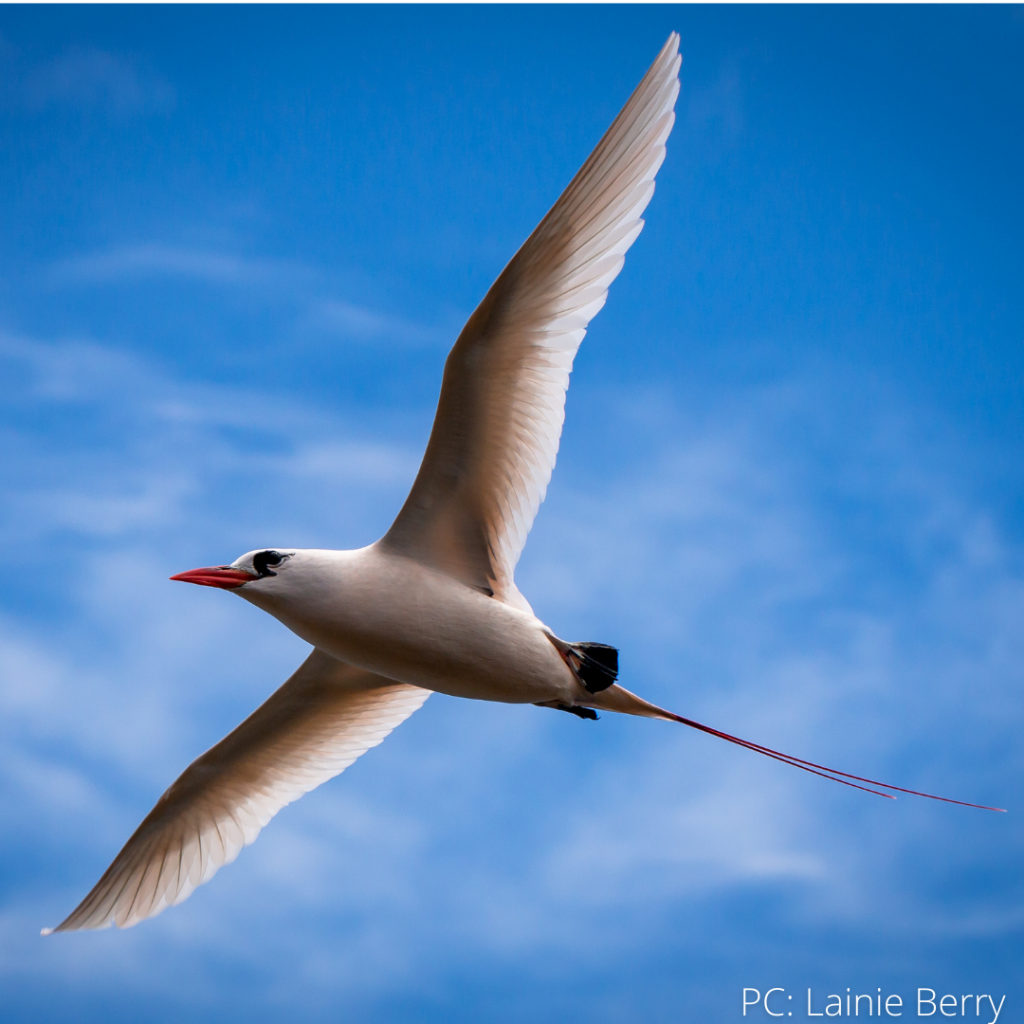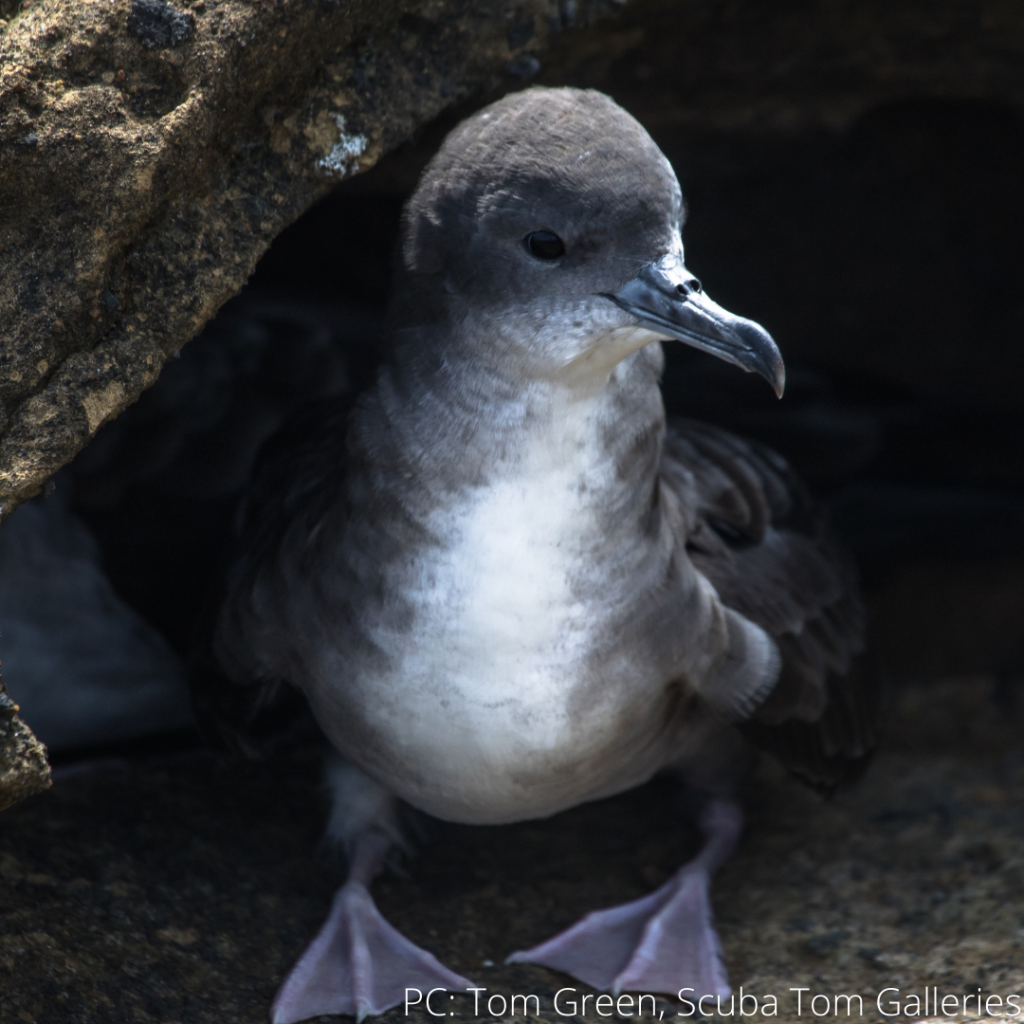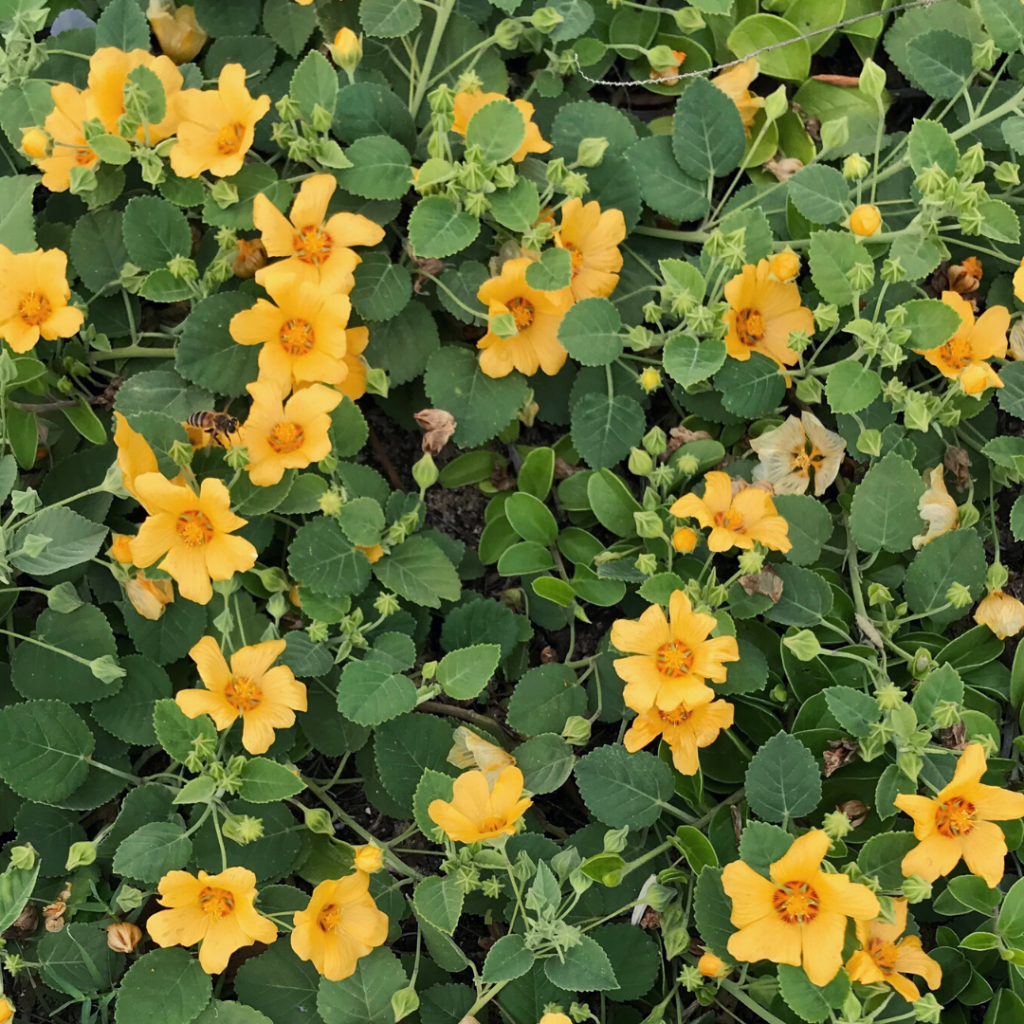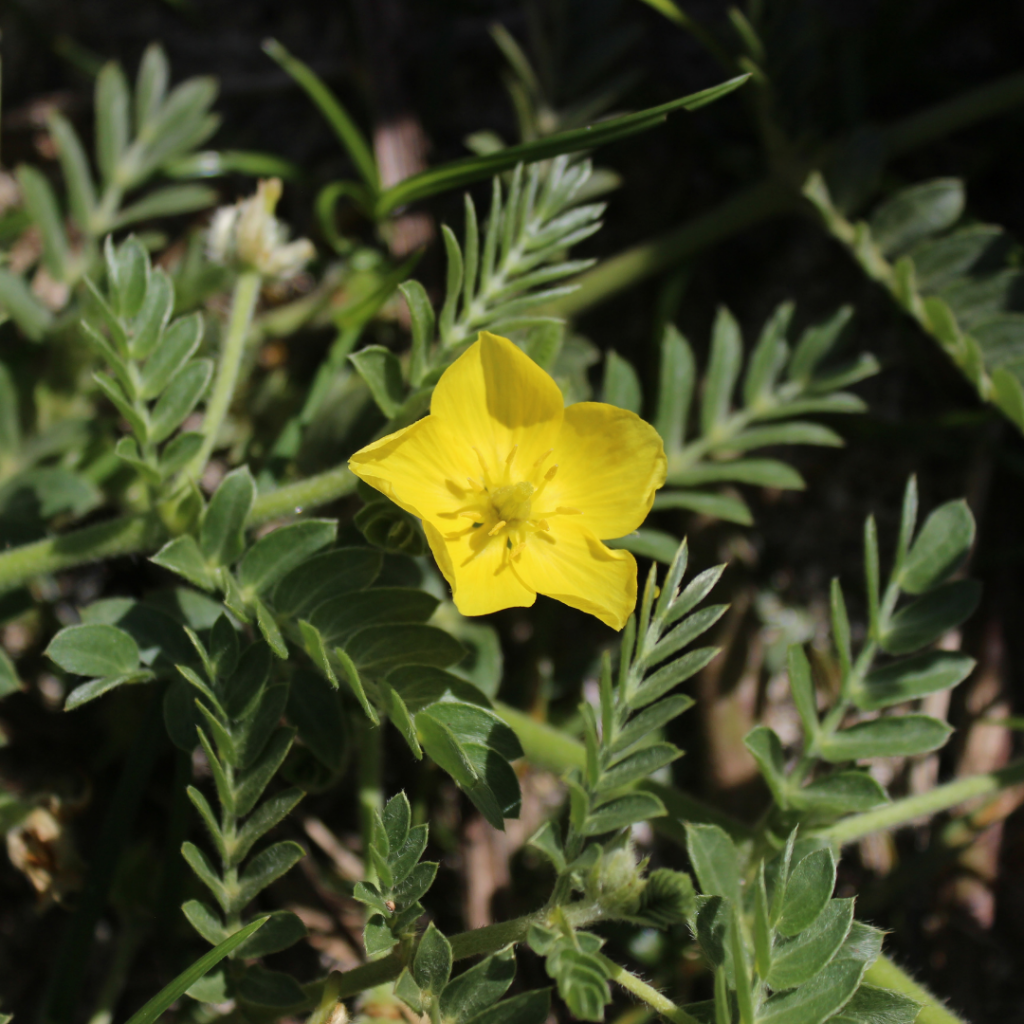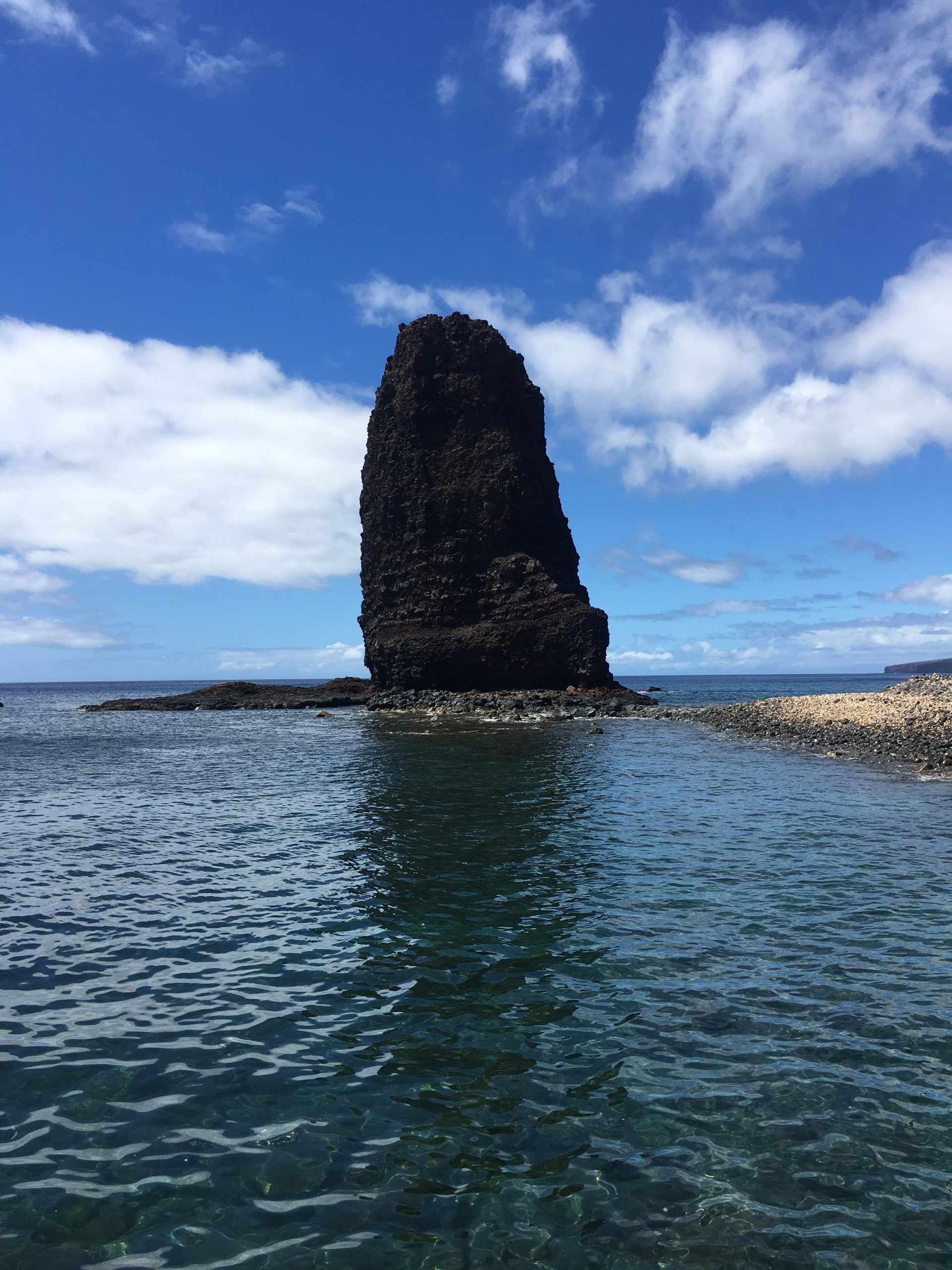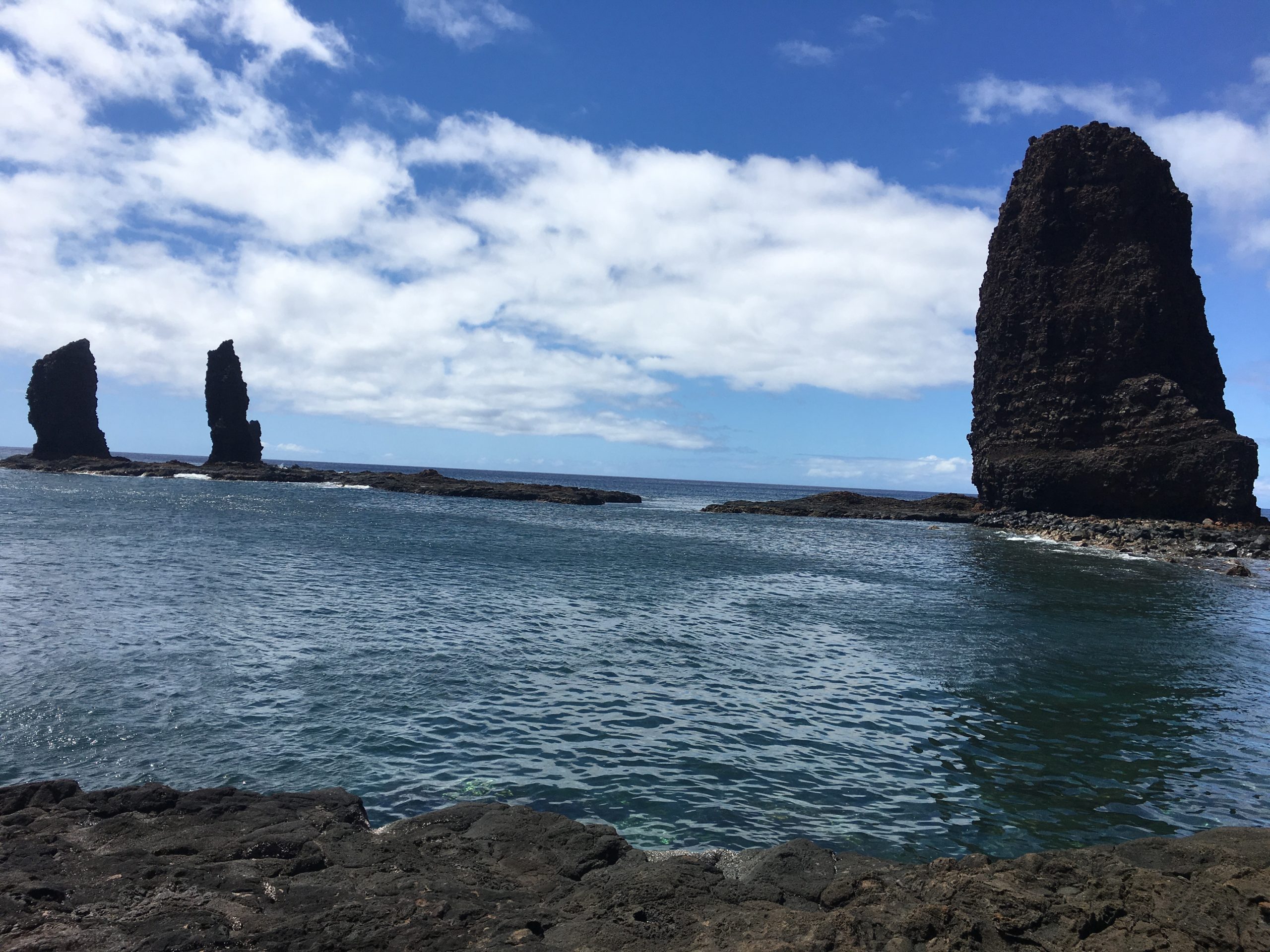Lānaʻi Offshore Islets Seabird Sanctuaries
Table of Content:
- Puʻu Pehe Islet Seabird Sanctuary
- Poopoo Islet Seabird Sanctuary
- Moku Naio Islet Seabird Sanctuary
- Nanahoa Islets Seabird Sanctuary
Puʻu Pehe Islet Seabird Sanctuary
Description
Puʻu Pehe Islet, also known as Sweetheart Rock, is a tall basalt sea stack located near Manele / Hulupoe Bay just offshore from the main island of Lānaʻi in Puʻu Pehe cove, which includes a sand beach on the west side of the cove and precipitous sheer walls on the east side. Puʻu Pehe is a small islet about 1.6 acres in size reaching a height of about 100 ft. The islet has a flat top area and a sloping area towards the east. There are loose blocks of basalt with pockets of soil. The north and west sides have sheer cliffs. A wave worn bench with tide-pools lie below. There is a heiau on the top of the islet. Several non-vegetated rocks lie nearby the islet. This islet is closed to the public.
Puʻu Pehe Islet is mostly a dry grass and shrubland, dominated by buffel grass (Cenchrus ciliaris) and sandbur (Cenchrus echinatus), with ilima (Sida fallax) shrubs interspersed among the grasses. The islet could probably support a couple to a few hundred birds. Some insects on Puʻu Pehe include ants, garden spiders (Argiope sp.), honey bees (Apis mellifera) visiting ilima flowers, paper wasps (Polistes spp.), uhaloa moths (Eublemma accedens), Hawaiian beat webworms (Spoladea recurvalis), and small cricket-like orthopterans.
Activities
None.
Permits & Rules
- This sanctuary is CLOSED, per administrative rules Chapter 126 (Wildlife Sanctuaries).
- Commercial activities are prohibited.
- Other activities (like scientific research, conservation management, or subsistence, traditional, and customary practices by Native Hawaiians consistent with the long-term preservation of the wildlife sanctuary resources) may be possible with a permit. Individuals interested in permits should review the detailed information on our Permits & Guidelines page and contact their local DOFAW office.
Some Native Plants & Animals
These are examples of native species associated with this site. This is not intended to be a comprehensive species inventory.
|
|
Ilima (Sida fallax) |
Poopoo Islet Seabird Sanctuary
Description
Poopoo Islet is located on the south-central coast of Lānaʻi. Poopoo is a teardrop shaped islet just offshore and west of Huawai Bay. It is narrow on the north end broadening on the south, made up of basaltic substrate of boulders and soil, approximately 20 m elev., 40 m x 40 m , with a marine-bench with tide-pools on the south. About seven pair of wedge-tailed shearwaters (‘Ua‘u kani) observed pairing off in burrows on upper western slope. This islet is accessible by boat, but is not open to the public.
Activities
None.
Permits & Rules
- This sanctuary is CLOSED, per administrative rules Chapter 126 (Wildlife Sanctuaries).
- Commercial activities are prohibited.
- Other activities (like scientific research, conservation management, or subsistence, traditional, and customary practices by Native Hawaiians consistent with the long-term preservation of the wildlife sanctuary resources) may be possible with a permit. Individuals interested in permits should review the detailed information on our Permits & Guidelines page and contact their local DOFAW office.
Some Native Plants & Animals
These are examples of native species associated with this site. This is not intended to be a comprehensive species inventory.
|
ʻIlima (Sida fallax) |
Nohu (Tribulus cistoides) |
Moku Naio Islet Seabird Sanctuary
Description
Moku Naio Islet (Moku Noio Islet, Shark Fin Rock) is a small shark fin shaped rock located near the southern end of Pali Kaholo of the main island of Lānaʻi and just offshore from Kahekili’s Leap. The small islet is only 0.1 acre in size and reaches a height of about 30 ft. No vegetation is found in the islet due to the harsh environment.
Activities
None.
Permits & Rules
- This sanctuary is CLOSED, per administrative rules Chapter 126 (Wildlife Sanctuaries).
- Commercial activities are prohibited.
- Other activities (like scientific research, conservation management, or subsistence, traditional, and customary practices by Native Hawaiians consistent with the long-term preservation of the wildlife sanctuary resources) may be possible with a permit. Individuals interested in permits should review the detailed information on our Permits & Guidelines page and contact their local DOFAW office.
Some NativeAnimals
Animal information for our DOFAW-managed area will be coming soon.
Nanahoa Islets Seabird Sanctuary
Description
Nanahoa islets are a collection of 4 sea stacks off the western coast of Lānaʻi, located just offshore near Honopu Bay. The islet closest to the main island of Lānaʻi is the tallest and has the most vegetation on it, though vegetation was only observed on the top surface. This islet is shaped like a round pillar of rock with a slanted top and stands about 128 ft. high.
Just past this pillar are two medium sized rocks, one similar in shape to the large islet, but smaller in stature that also has some vegetation on the top surfaces, and one with a more pointed top with vegetation mostly near the top on the side. The furthest rock out is the shortest and is somewhat shark fin shaped.
Activities
None.
Permits & Rules
- This sanctuary is CLOSED, per administrative rules Chapter 126 (Wildlife Sanctuaries).
- Commercial activities are prohibited.
- Other activities (like scientific research, conservation management, or subsistence, traditional, and customary practices by Native Hawaiians consistent with the long-term preservation of the wildlife sanctuary resources) may be possible with a permit. Individuals interested in permits should review the detailed information on our Permits & Guidelines page and contact their local DOFAW office.
Some Native Plants & Animals
These are examples of native species associated with this site. This is not intended to be a comprehensive species inventory.
|
ʻIlima (Sida fallax) |


